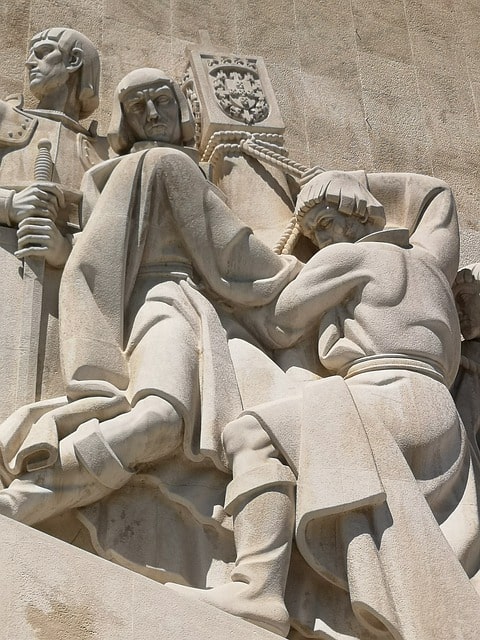Who was Bartolomeu Dias? Traveler, sailor, conquistador…. But he went down in history as the discoverer of the Cape of Good Hope. His life falls during the period of the Great Geographic Discoveries. He is one of the most important explorers alongside Christopher Columbus, Vasco da Gama and Ferdinand Magellan.
Youth
Bartolomeu Dias was born around 1450 in the Faro area. As in the case of Vasco da Gama, not much information about his youth has survived. He is said to have come from a family of sailors and explorers, but this is not confirmed. All that is known is that he worked as chief overseer of the port warehouses, and was also navigator of the warship São Cristóvão. On October 10, 1486, he was appointed by King John II of Portugal to lead an expedition to explore the southern coast of Africa and then set out by sea for India. The search for an alternative sea route was one of Portugal’s main goals at the time. This was due to the intensive development of the spice trade and the ever-increasing toll set by “middlemen” (mainly Arabs) on the overland route and through the Red Sea.
Expedition to the Cape of Good Hope
The expedition commanded by Dias set out from Lisbon in August 1487. The fleet consisted of three ships, including the caravel São Cristóvão, which he commanded. In his diaries, Diaz states that he sailed the entire way in safety, making sure to see the shore of the mainland from his ship. The route initially followed the west coast of Africa and the Cape Verde Islands before heading southwest toward the mouth of the Congo River. On December 8, 1487, the crew reached Santa Maria da Conceicao Bay (Bay of the Whale, an area of present-day Namibia), the furthest point set by the Diogo Cão expedition. From there, the Dias-led fleet continued south. Although they managed to circumnavigate the southern tip of the African continent, running out of rations and a crew mutiny forced the expedition to return via the west coast and set course for Lisbon. On the way back, however, the sailors were surprised by a storm. They managed to find shelter in a rocky bay that Dias named the Cape of Storms, later renamed the Cape of Good Hope. The voyage lasted nearly 16 months.

Figures of Bartolomeu Dias and Diogo Cao holding a stone padrão on a monument to the Discoveries in Lisbon
Consequences of the expedition
Although the expedition was not the intended success, it had important consequences for subsequent voyages. Thanks to the experiences gathered during the voyage, Dias provided a number of valuable insights into the local sea currents and winds and the topography of the continent, which helped improve the ships and prepare Vasco da Gama’s expedition in 1497. It was da Gama who first carried out the bold plan to find a safe sea route to India, which in later years enabled the Portuguese to continue sailing the Indian Ocean and develop maritime trade. It also had a major impact on building Portugal’s colonial power.
Death
Bartolomeu Dias was a member of the second expedition to India led by Pedro Cabral, which first set out for Brazil, where it arrived in 1500. From there, the ships headed east. On May 29, 1500, the expedition reached the vicinity of the Cape of Good Hope. Unfortunately, its participants were caught off guard by a violent storm that put an end to the expedition. The disaster resulted in the sinking of all four participating ships, and the participants, including Bartolomeu Dias, drowned.
